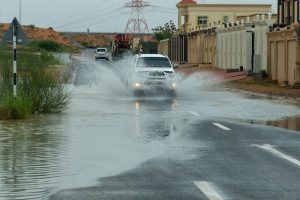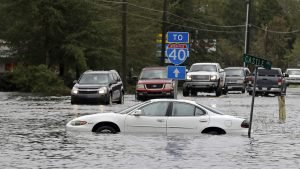Introduction
Severe weather creates some of the most dangerous driving conditions. From heavy rain and flooding to tornadoes and lightning, drivers must know how to respond quickly and safely when nature takes control.
1. Driving in Rain

-
Hazards: Reduced visibility, slippery roads, hydroplaning.
-
Safety Tips:
-
Slow down and increase following distance.
-
Use headlights and windshield wipers.
-
Avoid sudden braking or sharp turns.
-
2. Flooded Roads

-
Hazards: Water hides road damage and can sweep vehicles away.
-
Safety Tips:
-
Never attempt to drive through flooded roads (“Turn Around, Don’t Drown”).
-
As little as 6 inches of water can stall a car; 2 feet can carry it away.
-
If trapped in rising water, abandon the vehicle and move to higher ground.
-
3. Tornadoes
-
Hazards: Flying debris, overturned vehicles, zero visibility.
-
Safety Tips:
-
Do NOT try to outrun a tornado in a car.
-
If nearby, seek shelter in a sturdy building.
-
If caught in the open, leave the car and lie flat in a low ditch, covering your head.
-
4. Thunderstorms & Lightning

-
Hazards: Blinding lightning flashes, downed power lines, falling trees.
-
Safety Tips:
-
Stay inside your car—it acts as a metal cage that directs lightning around you.
-
Avoid touching metal surfaces inside the vehicle.
-
Pull off safely if visibility is severely reduced.
-
Why It Matters
Severe weather can strike suddenly and without warning. Knowing how to react can save your life and protect others on the road.
Takeaway: In extreme weather, slow down, stay visible, and never take risks with floods or tornadoes. Your vehicle is replaceable—your life is not.
